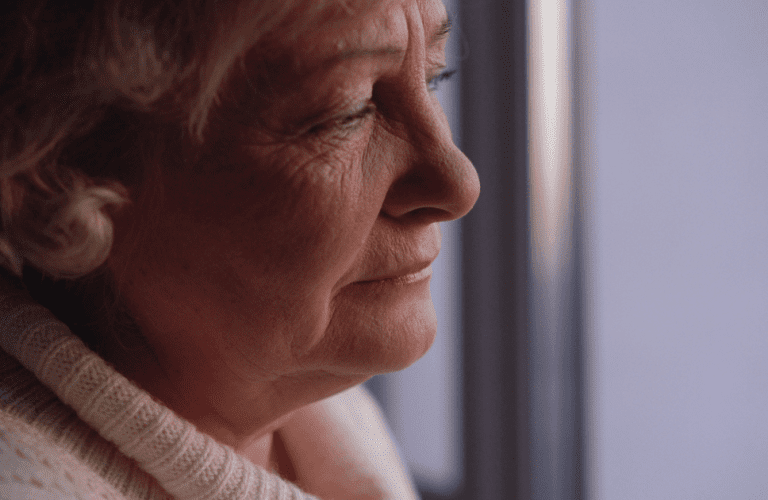Isolation in Seniors and Why Socialization Is So Important for Their Overall Well-Being

Have you noticed that an older loved one is staying at home more? Perhaps they’re declining social invitations or appearing to have lost interest in activities once enjoyed. If there is little talk of time spent with friends, this may be a cause of concern as well as a potential health hazard.
Social isolation in seniors can significantly impact their health and well-being. While it’s normal for individuals to enjoy some solitude, excessive isolation can lead to negative health consequences. In fact, a lack of social connection can significantly increase a person’s risk of premature death, similar to those who smoke, are obese or physically inactive.
Understanding the risks of isolation in seniors
Social isolation in older adults can remain unnoticed until it becomes severe. It’s crucial to recognize the warning signs early. If you observe an older adult who rarely leaves home, appears lonely or seems disconnected from the community, it’s time to discuss solutions.
When considering isolation in seniors, you should first search for conditions that might be the cause. Ask these questions to gain clarity:
- Are there physical challenges that make leaving home difficult?
- Is there a sensory impairment, like hearing loss, that makes socializing challenging?
- Could cognitive decline be affecting your loved one’s social interactions?
- Could depression or another mental condition be present?
Effects of isolation in seniors
The consequences of prolonged isolation are serious. Research indicates that older adults who experience extended periods of social isolation can also face heightened risks linked to diabetes, heart attacks, insomnia and dementia. The lack of social engagement can intensify existing health issues and lead to the development of new ones.
An interview between the U.S. Surgeon General, Dr. Vivek Murthy and CNN revealed a link between loneliness and isolation to sleep problems, inflammation and immune changes in younger adults. And in the older population, these characteristics were tied to pain, insomnia, depression, anxiety and even a shorter life span.
Download our complimentary
Family Decision Toolkit.
The role of assisted living in preventing isolation in seniors
Assisted living communities can play a pivotal role in mitigating the risks of isolation and loneliness. They are uniquely positioned to offer social interaction and opportunities to engage by providing the following:
- Structured social activities: Assisted living communities often have diverse activities designed to cater to different interests and abilities. From group exercise classes, art workshops, book clubs and movie nights, these activities encourage residents to engage with one another, fostering a sense of community and belonging.
- Opportunities to meet and make new friends: One of the most significant benefits that assisted living offers seniors in isolation is the ease in creating new friendships. It can be more challenging to meet new people when older, but the community’s common areas and planned activities almost guarantee your loved one will make friends and enjoy the camaraderie with the other residents.
- Personalized care plans: Recognizing that each resident is unique, assisted living communities create personalized care plans. These plans address physical health needs and incorporate social and emotional aspects. Communities are designed to tailor activities and social events to ensure residents can engage fully.
- Community spaces: Assisted living communities provide inviting common spaces that encourage interaction. Dining areas, gardens and common rooms are not just functional spaces; they’re also social hubs where residents can connect and interact with others.
- Friends and family involvement: Engagement with friends and family is a critical component of a high quality of life. Assisted living communities often organize events and encourage family members to participate, helping maintain and strengthen these bonds.
- Professional support: Staff members in assisted living communities are trained to recognize signs of social isolation and loneliness and will intervene and provide support, whether through facilitating social connections or recommending family or medical intervention.
Addressing isolation in seniors
While the occurrence of loneliness and social isolation in seniors is real, it doesn’t have to be permanent. As adult children and caregivers, staying vigilant and proactive is crucial.
Assisted living communities offer a supportive environment where older adults can thrive socially, emotionally and physically. Choosing a community that prioritizes social connectivity and personalized care can help encourage your loved one to lead a fulfilling, enriched and healthy life.
Discover life at a Northbridge community.
If you’re considering senior living for yourself or a family member, we hope you’ll visit one of our communities. You’ll find a maintenance-free, activity-filled and engaging lifestyle to help support your wellness goals.
You’ll also discover many benefits in a Northbridge Senior Living community, including our Signature Program S.T.A.R. Club (Sharp Thinking, Active Residents) – which offers our residents several activities to participate in with others, including:
- Daily exercise group
- Walking club
- Tai Chi & yoga
- Nutritional classes
- Library and book club
- Museum outings
- Artists in residence program
- Multi-generational music
- Genealogy Generations
We’re here to answer any of your questions. Please contact us if we can provide further information or if you would like to schedule a personalized tour. Download our complimentary Family Decision Toolkit.
